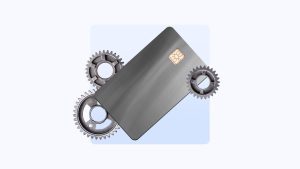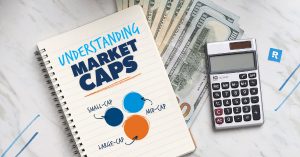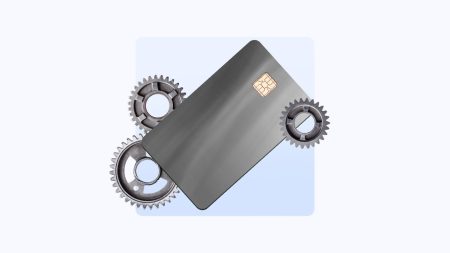The Federal Reserve slashed its federal funds rate by 50 basis points, or half a percentage point, to a target range of 4.75-5 percent at its latest Federal Open Market Committee meeting on Wednesday. This marks the first decrease in more than four years since the Fed set rates to near zero percent during the coronavirus pandemic. It also comes two years since the Fed began hiking rates in March 2022 to combat inflation.
Among other things, the Fed’s rate hikes drove up the cost of borrowing money, which is why interest rates on mortgages and credit cards have been so high. On the flip side, yields on deposit accounts including certificates of deposit (CDs) and savings accounts skyrocketed, as banks began offering annual percentage yields (APYs) not seen in decades.
But with the recent rate cut — and more cuts expected to come — we’re seeing a reversal when it comes to yields on deposit accounts. To that end, you may be asking yourself: Is it still worth opening a CD? For the right CD, the short answer is yes, but it depends on your particular financial needs, not just a high APY.
Now that the Fed’s first rate cut in four years is a fait accompli, there are still opportunities to open CDs with competitive rates, despite decreasing yields. Here are the benefits of continuing the search and what to look for if you’re interested in opening one right now.
What are the benefits of opening a CD right now?
Now that inflation – currently at 2.5 percent – is closer to meeting the Federal Reserve’s 2 percent target, the central bank is poised to continue decreasing interest rates, though the exact cadence of those cuts is guesswork at this point. But we do know that several banks have reacted by decreasing APYs on various deposit products.
As such, we’re likely to see substantial decreases on many top-yielding deposit accounts, including high-yield savings accounts, in the coming months — and that’s where the benefit of locking in a high-yield CD right now lies.
Outpacing future rate cuts
Interest rates on checking, savings and money market accounts are variable, meaning they can change at any time. Thus, while your savings account may have earned a competitive yield when you opened the account, it may earn substantially less at a later date.
In contrast, when opening a CD, you lock in the advertised yield for the duration of the CD’s term. Thus, opening a CD right now while interest rates on deposit accounts are still relatively high will guarantee that you continue to earn a robust yield, even as the Federal Reserve continues to slash rates, and by extension, as banks begin to diminish yields on deposit accounts.
Outpacing inflation
And, of course, there’s also inflation to think about. Ideally, you want a deposit account that outpaces inflation, which bars against the eroding effect of inflation on your dollar. But you can’t guarantee your savings or money market account will continue to earn a yield that beats inflation, as banks can change their APYs at any time.
With a CD, however, you know exactly how much you’ll earn over a specific period of time. CD terms typically range from as short as three months to as long as five years, giving you the opportunity to choose an account that outpaces both inflation and future rate cuts. Particularly with longer terms, you can guarantee your money keeps earning a 2024 yield, even when it’s 2025 and beyond.
What should you consider when opening a CD right now?
Sure, a high APY is a prime factor when opening a CD, but there are others to consider.
In general, these are the main components of a CD: the yield, the minimum deposit requirement, the term length and the penalty for early withdrawal. You’ll need to balance each of these factors to meet your specific needs.
In terms of the yield, CDs with APYs around or exceeding 5 percent are particularly competitive right now.
The typical minimum deposit requirement for a CD is $1,000, though there are CDs that require less and others that require more. You’ll want to balance the amount you deposit and the CDs term, as you’ll need to consider how long you can park your cash in the account without needing to withdraw from it. Unless you’re opening a no-penalty CD, you’ll likely get hit with a penalty for withdrawing your money before the CD’s maturity rate.
Moreover, if your main goal is choosing a CD that will outpace inflation and future rate cuts, you’ll want to consider CDs with very high yields and terms of one year or greater. CDs with shorter terms won’t give you as much bang for your buck right now, unless you’re interested in setting up a CD ladder, which means you’d be opening several CDs with different maturity dates.
“The ability to lock in a multi-year CD at a yield that should handily outpace inflation is particularly attractive to retirees looking to generate income, for specific cash needs in the future, or as a way to diversify an overall portfolio,” said Greg McBride, Bankrate’s Chief Financial Analyst. ”But you have to be able to live without that money for the term of the CD.”
Particularly attractive CDs before the Fed’s rate cut that are still offering a high yield include:
- Quontic: 6-month CD at 4.60% APY
- CIBC Bank USA: 1-year CD at 4.81% APY
- Bask Bank: 2-year CD at 4.00% APY
- Synchrony Bank: 3-year CD at 4.15% APY
- Alliant Credit Union: 5-year CD at 4.00% APY
Note: CD rates are accurate as of Sept. 20, and are subject to change at any time.
The bottom line
Annual percentage yields for deposit accounts, including CDs, are expected to dip further following the Federal Reserve’s recent interest rate cut. With more cuts on the horizon, locking in a high-yield CD now can help insulate you from the declining rate environment we’re now entering. Choosing a CD with a term of one year or greater will be particularly helpful in achieving this goal. And if you’ve got enough cash to set up a CD ladder, now may be your best bet.
Read the full article here
















